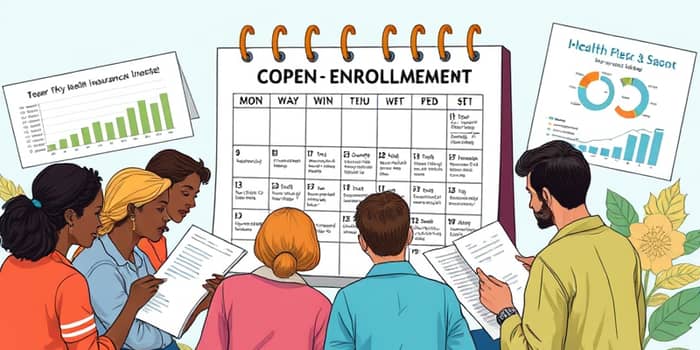
Each autumn, individuals and families face a critical decision period: selecting health, dental, vision, and supplemental benefits for the year ahead. By pairing benefit choices with smart tax planning, you can protect your health and maximize your tax savings this year.
This comprehensive guide explores core open enrollment deadlines, compares tax-advantaged accounts, offers strategic contribution advice, and highlights pitfalls to avoid. You’ll also find a handy checklist and trusted resources to ensure your choices work for both your health and your wallet.
Open enrollment is the annual window to select or adjust your benefits. On HealthCare.gov for 2025 coverage, the period runs from November 1, 2024, to January 15, 2025. If you enroll by December 15, 2024, your coverage begins January 1, 2025; if you wait until January 15, coverage starts February 1, 2025. Some states offer extended deadlines, so always verify local dates.
During this time, you can:
Missing this window means waiting for a qualifying life event—marriage, birth, job loss—before you can alter most benefits.
Tax-advantaged accounts help reduce your taxable income, grow funds tax-free, and enable tax-free withdrawals for eligible expenses. The three most common vehicles are HSAs, FSAs, and HRAs.
*Dependent Care FSA limits can vary; confirm employer specifics.
HSAs are available only with high-deductible health plans (HDHPs) and allow unused balances to roll over indefinitely. FSAs are use-it-or-lose-it, though some plans permit rollovers of up to $640. HRAs are employer-funded and provide reimbursements without employee contributions.
Deciding how much to contribute requires balancing immediate needs with long-term goals. Start by reviewing last year’s out-of-pocket expenses—prescriptions, visits, therapies—and estimating next year’s costs.
Key strategies include:
Remember, HSA contributions can be invested in stocks, bonds, or mutual funds, making them a powerful tool for long-term healthcare savings for retirement.
If you purchase coverage through the Health Insurance Marketplace, you may qualify for premium tax credits based on household size and income. For 2025, many consumers saw average savings of over $800 or even $0 premium plans after assistance.
Key considerations:
Avoid underestimating income; if you receive excess credits, you may owe money back at tax time.
Even savvy savers can make mistakes. Watch out for:
Support is available at no cost or low cost. Consider:
HealthCare.gov plan comparison tools, estimated subsidy calculators, and enrollment guides. Employers often provide benefits portals, calculators, and access to financial planners. Free in-person or virtual assistance is available from Navigators, Certified Application Counselors, and brokers—backed by a $100 million CMS grant to expand outreach.
Nonprofits and hospital systems may offer financial counselors for chronic care management. Don’t hesitate to reach out if your situation has unique needs.
By combining benefit selection with free enrollment assistance and expert advice, you ensure every dollar works harder for your health and finances.
Open enrollment only comes once a year—use this period to craft a benefits package that aligns with your health needs and financial goals. With careful tax planning, you can reduce liabilities now and build health savings for decades to come.
References













